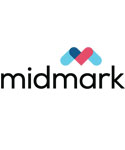Phase 3: Return Home
Once the patient has been discharged, the anesthesia continuum comes full circle. Pet owners can benefit from receiving anesthetic discharge instructions, in addition to a surgical discharge form. This guides postoperative care by the pet owner and alleviates their concerns, addressing possible complications that could be encountered and outlining when the veterinary team should be contacted. Click here for an online, customizable, discharge template.
Anesthesia-related drugs for discharge generally include analgesics, primarily NSAIDs for most patients, and may include anxiolytics and maropitant. Antibiotics are a component of surgical care and outside the scope of this document. Because opioids are DEA controlled and subject to diversion, they should be provided only to patients predicted to otherwise experience substantial pain and only after careful study of the DEA, FDA, and individual state guidelines. Links to regulatory information and opioid alternatives are available through the International Veterinary Academy of Pain Management.54
Example of Information Included in an Anesthesia Discharge Form
Pets may experience some sedation for the first 12–24 hr following hospital discharge but should be easily awakened and able to perform normal functions. Pets may have a decreased appetite for 12–24 hr following anesthesia. This time frame may be longer dependent on the type of surgical procedure performed. Pets may experience a slight cough for 1–2 days from mild irritation from the breathing tube used during anesthesia.
Call the veterinary team if:
- Your pet’s appetite or activity level does not return to normal within 24 hr
- Your pet’s cough is moist, progressive, or productive
- Your pet experiences any concerning changes in behavior or mentation.





